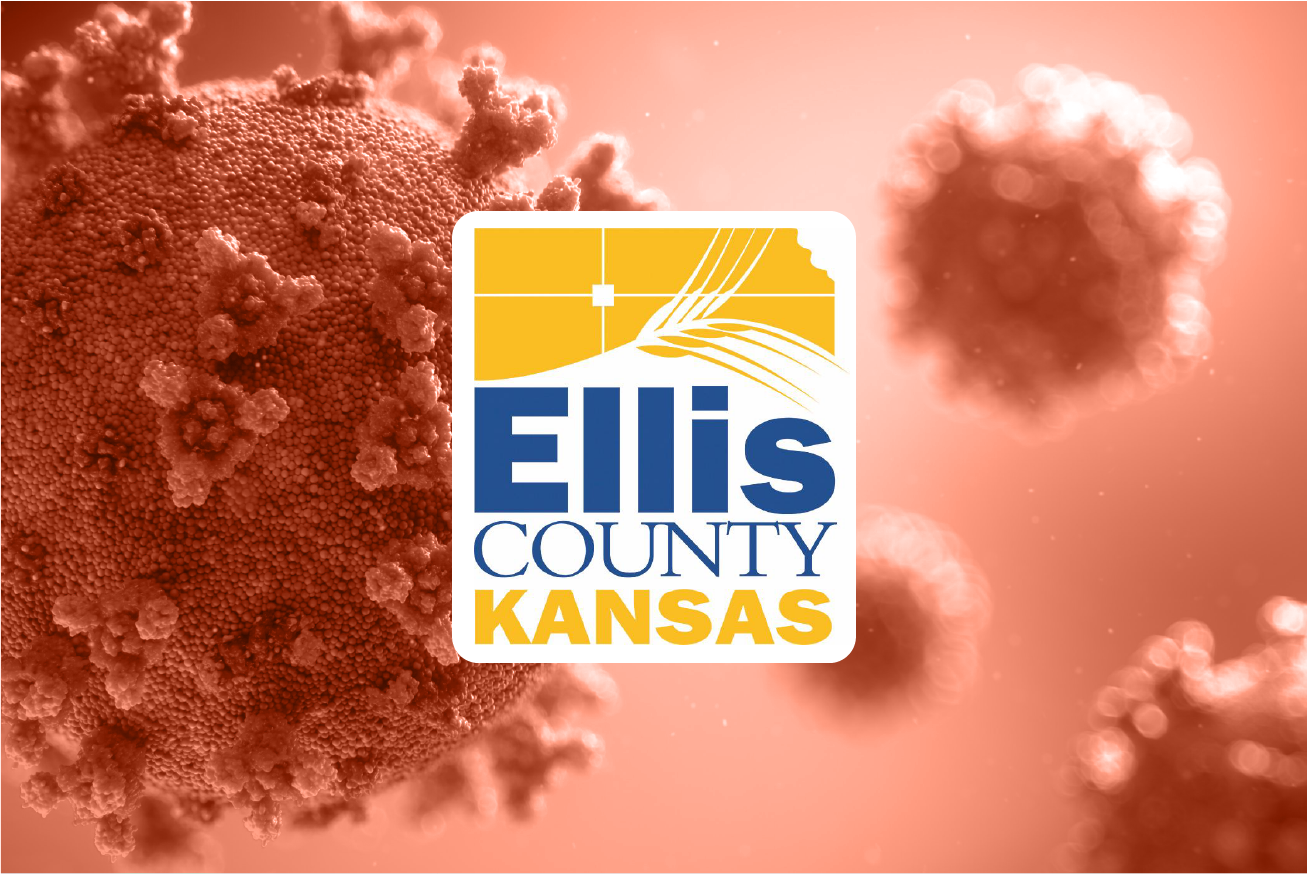BY JUSTIN SABATA
Trends Continue
COVID cases are rising nationwide to record numbers in some areas. Just recently, the U.S. reached 15 million total cases since the pandemic began. According to the New York Times, the country just recorded the most COVID deaths in a week with an average of over 2,220 deaths per day. Midwestern states such as Minnesota, South Dakota, and Nebraska are currently the most affected by the virus according to the Center for Disease Control.
In Ellis County, no new COVID deaths have been reported since November 27. Although, the county still averaged 22 new cases per day as of Wednesday. At the same time, the weekly percent-of-positives rate still hovers around 30% (29.80% on Monday, 27.90% on Wednesday).
Ellis County Director of Health Services Jason Kennedy gave his COVID report during Monday’s county commission meeting for the first time in three weeks. While at the podium, Kennedy described the impact the virus has had since then.
“COVID’s not better, it’s obviously worse,” Kennedy said. “Cases are up, hospitalizations are up.”
Kennedy reported the worst seven-day increase in Ellis County cases occurred on November 21. Statistically, the area has been trending downward since then. Yet, as the health director pointed out, this could be due to not as many tests being administered. Especially a reported decrease in drive-thru testing at Big Creek Crossing.
“As our numbers decrease, our testing decreases,” Kennedy said. “We still have widespread community transmission, really uncontrolled, community transmission in Ellis County, in the State of Kansas – there’s not really a single locality that is doing well with COVID transmission.”
The U.S. is entering its 10th month of the pandemic. Even so, Kennedy reiterated the meaning and importance of the constant numbers being reported.
“We’ve spent just a ton of time on numbers,” Kennedy said. “But, I think we’ve lost sight of the fact that numbers are impacts to the community – so as cases go up, impacts go up.”
Vaccine
The health director then addressed the questions commonly asked about the potential vaccine. According to Kennedy, the handling of the vaccine has been done mostly by the State of Kansas and not local health departments.
“The State seems like they are going to control all of the distribution, We’ve seen no comprehensive plan in our office of how that’s going to get out, or what that looks like. We do know that they have storage lined up in a few designated spots in the state – they are not disclosing those locations for security reasons,” Kennedy said. “And they are going to prioritize, at least the last that we saw, they are going to prioritize frontline healthcare workers and long-term care residents.”
There is no set timetable for a vaccine, but many healthcare workers including Kennedy predict one to arrive by the end of 2020.
Hospital Capacity
Some hospitals in Kansas have reached full ICU capacity with some hospitals sending COVID and non-COVID patients to other states. However, according to the Shawnee Mission Post, bordering states like Nebraska and Colorado have requested to do the same in Kansas. Unlike other parts of the state, however, Kennedy stated that local hospitals have not neared their full capacity.
“They still have, obviously, issues really nationwide with hospital capacity issues,” Kennedy said. “But, we are not at the point, at least in Ellis County, where we’re giving any type of crisis care in the parking lot or that people are being turned away at the E.D. (emergency department) because they’re, you know, having medical issues.”
Active hospitalizations in the county have ranged from nine to 15 over the past two weeks. On Wednesday, the health department reported 19 active hospitalizations.
New Quarantine Guidelines
Last week, the CDC updated their guidelines regarding COVID quarantines. While it is still recommended to quarantine for the full 14-day period after exposure, it is now not necessary depending on the individual situation. A quarantine can now end after 10 days if no new symptoms are present, and after seven days if an asymptomatic person also tests negative. In order for quarantine to only last seven days, individuals are advised to be tested around day five of quarantine. A person must also not be in contact with anyone with the virus within those five days.
“If you don’t want to test, then they reduced it from 14 days to 10 days,” Kennedy said. “That’s still post-contact so, if you live in a home with a positive and you cannot isolate inside the home, you could still be in quarantine for up to 20 days.”
Ellis County residents are encouraged to call their doctor to schedule an appointment if they are symptomatic. More information regarding COVID in Ellis County is available on the Ellis County Health Department’s website and Facebook page.
“There’s monikers with testing and all that kind of stuff,” Kennedy said. “But, honestly, the best plan is to go and be tested post-contact – it allows us to maybe diagnose or find the infections faster – isolate once you become a positive, stay out of the community for your ten days, and then get back to a COVID-safe life.”
FHSU COVID Response
Fort Hays State recently gave their weekly update for COVID on campus. According to their COVID-19 Dashboard, out of the 13 tests given at the Student Health Center from November 28 to December 4, six returned positive. During the same time, one student was in on-campus quarantine with three in isolation off campus. 46 surveillance tests were also conducted with no positives and three results pending.

